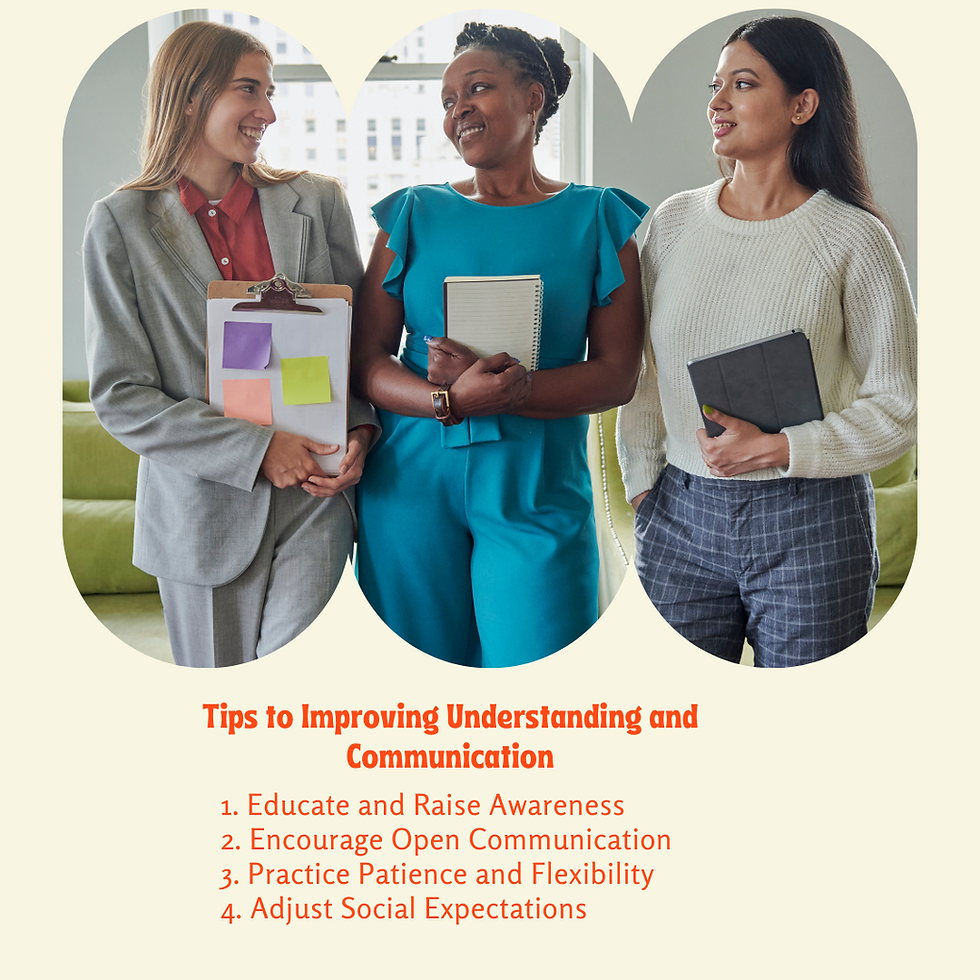Misinterpreted Intentions: How Different Processing Styles Lead to Conflict in Neurodivergent Individuals
- Gretchen Pound, PhD
- Mar 6
- 3 min read

In a world that values conformity, neurodivergent individuals often face conflict due to differences in how they process and interact with the world. Conditions like autism, ADHD, and dyslexia come with unique cognitive styles that can lead to misunderstandings, especially when intentions are misinterpreted due to these processing differences.
Understanding Neurodivergence and Processing Styles
Neurodivergence refers to conditions where the brain processes and reacts to information differently from the norm. Common neurodivergent conditions include:
Autism: Involves differences in social communication, sensory sensitivities, and routine preference. This may lead to missed social cues or difficulty with small talk, not a lack of empathy.
ADHD: Causes struggles with focus, impulse control, and processing multiple stimuli, often leading to interruptions or disorganization, which can be misunderstood as rudeness.
Dyslexia: Affects reading and writing but doesn't reflect a lack of intelligence, as individuals may excel in verbal or conceptual skills.
These processing differences are often invisible, leading to misunderstandings or misinterpretations of intentions.
Misunderstood Social Cues
Misunderstood social cues are common in interactions with neurodivergent individuals, who may struggle to interpret body language, facial expressions, tone of voice, or silences. For example, they might avoid eye contact or fail to notice when someone is upset, leading others to see them as rude or uninterested. Conversely, neurodivergent individuals may misinterpret others’ intentions, such as assuming anger when the intent is excitement, creating tension and defensive reactions.
Communication Styles: Direct vs. Indirect
Communication can also be a source of conflict, as neurodivergent individuals often communicate more directly or literally, while neurotypical people use more nuanced or indirect language. For example, someone with ADHD might give blunt responses, and someone with autism might avoid eye contact or use very literal language. These communication styles, though natural for neurodivergent individuals, can be perceived as cold or impolite by neurotypical people.
Sensory Processing Differences
Neurodivergent individuals, especially those with autism or ADHD, may experience heightened or diminished sensory processing. Everyday sounds, lights, or textures can be overwhelming, leading to withdrawal or irritability, which may be misinterpreted as hostility. For example, a person with autism may avoid a crowded party to prevent sensory overload, and someone with ADHD may fidget during a meeting to stay focused, both behaviors often misunderstood by neurotypical people.
Emotional Responses and Impulse Control
Neurodivergent individuals often experience emotions more intensely and may struggle to regulate their responses. For example, someone with ADHD might react impulsively, while someone with autism may have difficulty processing frustration, leading to emotional outbursts. These reactions are often misunderstood as tantrums or overreactions, but they are usually the result of sensory or cognitive overload beyond the individual's control.
Breaking Down the Barriers: Improving Understanding and Communication
To improve communication between neurodivergent and neurotypical individuals, we can:
Educate and Raise Awareness: Understanding neurodivergent conditions and processing challenges helps reduce misinterpretations.
Encourage Open Communication: Create an environment where both sides can express needs and ask questions, rather than assuming intent.
Practice Patience and Flexibility: Recognizing that neurodivergent individuals may need more time to process information fosters understanding.
Adjust Social Expectations: Adapting expectations, such as recognizing that eye contact or small talk may be challenging, can lead to more compassionate interactions.
Conclusion
Misunderstandings between neurodivergent and neurotypical individuals are often rooted in differences in processing styles. What may seem like an intentional slight or a social faux pas is often just a result of divergent thinking and interaction. By fostering a more open-minded, patient, and educated approach to communication, we can reduce conflict and build stronger, more understanding relationships. Recognizing and respecting these differences is beneficial not only for neurodivergent individuals but also for everyone—creating a world where all cognitive styles can coexist harmoniously.
Join Us on Social Media: Follow us for more insights and updates.
And Remember
"I want to make a difference in people’s lives!
I work to ensure everyone has an
equal opportunity to succeed."
-- Gretchen Pound, PhD
